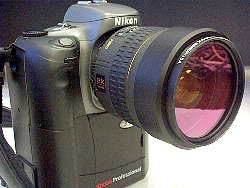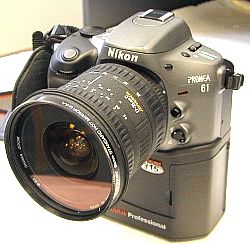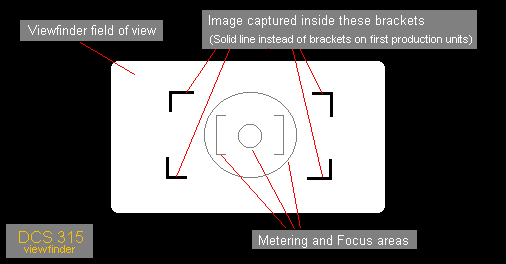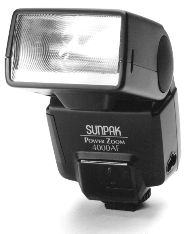|
|
|
The
Kodak DCS 315 will appeal to very
serious digital camera hobbyists,
semiprofessional or professional
photographers, and 35mm SLR camera
owners who want to apply their existing
camera familiarity to advanced digital
photography. Sample Pictures
-
"There's
something different here... They look like
'real' camera pictures." Click
on any thumbnail below for a larger
view (Resized to
1018x675 pixel jpegs from the original 1520x1008
resolution tiffs for faster loading to your
screen)
DCS 315 photos
have a distinct edge over those from fixed lens
digitals with regards to depth and dimension.
Compare any similar picture from the "regular"
type digital camera reviews in the site - you'll
see the difference between ordinary depth and
the three dimensional depth of an
interchangeable lens SLR digital like the DCS
315. It caught my eye right away.
The Camera
-
The
Kodak DCS 315 will challenge and test
your skills and creative abilities far,
far beyond any other digital on the
consumer market today. "You won't get
bored with this camera..." With
Features, Features... ...
and More Features I always keep a
keen eye out for unique digital camera features
- lenses, options, image storage capacity,
battery life, "switches and buttons" to mess
with. (I like that kind of
equipment.) Sure, I was
pretty happy with the image qualities of my
other digitals, but I also longed to do things
beyond their limits. I was especially
looking for the ability to take powerful
telephoto shots with full sized picture
quality. (Add-on lenses with fixed lens cameras
are fun, but image quality often suffers to
varying degrees.) The DCS 315
"pulled my trigger" here... With the ability to
use the full range of Nikon compatible 35mm
camera lenses, I was very
excited. Plus
-
Fit,
Finish, and Feel The 315 is built
as a professional class camera. Quality
construction and long term durability was
clearly in mind when the 315 was designed. A
precise, machined fit to all the components.
Smooth and solid. Elegantly finished. First
class all the way. It has a good,
natural feel when you pick it up and slip your
hand through the grip strap. (The wide, padded,
glove-smooth leather adjustable strap fits
snugly over the top of your hand.) Sure, steady,
and solid. Just right for positioning your index
finger on the shutter button, with a relaxed
(but firm) one-handed hold on the camera...
Very, very comfortable. Pulling it up to your
eye to take a picture, your left hand has a
natural feel too, as you steady and frame your
subject with both hands. Not as heavy
feeling or bulky as I feared it might be when I
first picked it up, it's actually very close to
the weight and feel of a 35mm Nikon F5, or the
popular Nikon N90s with the optional vertical
grip attached. (ok - maybe it's a "little"
bigger... but I've actually gotten quite
comfortable with it.) Certainly not a
"point & shoot" camera to slip into my
pocket... Heck, I can't even fit a 315's
lens into my pocket! And is does draw
attention - "That's quite a camera you've got
there ... "
Quality
lenses Like a high
quality 35mm camera, you pick (buy) your own
lens preferences... the DCS 315 doesn't come
with any prepackaged lenses at all. Try to think
of this as an "opportunity" rather than a
disappointment... The range and style of
available lenses is huge. The camera will
accept both Nikon "IX" series lenses (made
especially for the APS format Pronea 6i camera),
and "AF" series lenses (Nikon 35mm camera
format). Camera stores and catalogs are filled
with choices. I strongly recommend the "fastest"
and the highest quality Nikon 35mm lenses you
can afford. These "fast" (f2.8 or larger base
aperture) 35mm format professional quality
lenses make a big difference in picture
quality. In my
experience, the "IX" (APS format) lenses have
had disappointing performance on the DCS 315. So
have "average quality" 35mm format lenses.
Pictures with these lenses tend to be somewhat
dull & muddy. Recommended
lenses: *
Other "fast", professional
quality lenses Take
notice - "Any" lens mounted on the DCS 315
will have the printed focal length multiplied
(magnified) 2.6 times in reference to a
comparable 35mm camera field of view. The 2.6
multiplier isn't necessarily bad. You just have
to understand what you're dealing with. And
"multipliers" with digital camera lenses are
routine and common, anyway. For example, the
immensely popular Nikon CoolPix 900 zoom
lens has an actual focal length of 5.8mm to
17.4mm (you'll find these numbers printed on the
lens), with a "35mm equivalent" value of 38mm to
115mm. That makes the Nikon 900 have a
lens multiplier of 6.55 (!) . Other digitals
have similar multipliers. They all say "35mm
equivalent" when they talk about their
lenses. The "35mm camera
factor" is important, because it is the standard
by which we have become accustomed, and the
standard with which we reference recognizable
lens magnification values and corresponding
fields of view. How is the
focal length magnified? The CCD sensor
takes the place of APS film in the camera body.
And because the CCD sensor is physically smaller
than a frame of APS film (which, by the way, is
smaller than a frame of 35mm film), it extends
(magnifies) the actual "working" focal length of
the camera lens considerably. It's a matter of
angles and the resulting math. Link
to the "Multiplier Effect" page in this site for
more information. The 2.6
"multiplier" and the resulting telephoto
opportunities -
Wide angle
challenge - Though the
telephoto opportunities are tremendous, wide
angle options become a challenge. For example, a
nice "wide angle" 35mm lens becomes an effective
91mm lens on the DCS 315 when multiplied by 2.6
(instantly becoming a nearly 2X mild telephoto).
Even a "very wide angle" 20mm lens becomes an
effective 52mm lens on the DCS 315. (50mm is
considered to be the standard for a so-called
"normal" 35mm camera lens.) And the resulting
fields of view will feel too confined for most
close range pictures. So how can true
"wide angle" be achieved on the DCS
315? Sigma
refers to the one shown below as "the widest
angle non fisheye lens in the
world". Here's
their 14mm f2.8 EX
aspherical lens. With an
equivalent 35mm camera focal length of
36.4mm, this one works very well as an
very nice fixed focal length wide angle
lens. It's called a "rectilinear" lens
(distortion free). And it has proven to
be such. The
removable hood has 72mm threads to add
a "hot mirror filter" (as
shown). I've
had some trouble with this lens
excessively "hunting" for
distant focus, occasionally
failing to lock in properly. (But
little or no problem on close range
wide angles or portraits.) I
personally like Sigma's 17-35mm f2.8-4
EX aspherical zoom lens (shown at
right) a little better than their 14mm.
It has an equivalent focal length range
of 44-91mm. It
exhibits no focal "hunting" problems at
all, and I consistently get sharp,
bright, and clear results with the
added framing flexibility of a zoom
lens. And the
17mm position (44mm effective) works
very nicely for most wide angle
needs. This
lens comes with a removable lens hood
(included), and has built-in standard
82mm threads for a hot mirror
filter. Good news
- The focal length
multiplier doesn't affect the "speed" of the
lenses. (The f-stop values are not affected.) A
2.8 lens remains 2.8, a 3.5 remains 3.5, and so
on.
The
Viewfinder - More of the
"multiplier factor" The final 2.6
multiplier factor of the lens on the CCD doesn't
show up in the viewfinder without some
additional help from Kodak. Through-the-lens
viewing is still configured for a Pronea APS
film camera. Therefore, the view through
the viewfinder area is larger than what the CCD
sensor actually "sees". Rather than
re-engineer the viewfinder mechanism completely
(because of costs and the resulting selling
price factors), Kodak has simply "marked" the
area that will be captured by the CCD in the
field of view. And with very little practice,
it's easy to get used to the modified
setup. Here's what you
see through the viewfinder -
Flash
Options ... Built-in or "Hot
Shoe" The DCS 315's
built-in popup flash is simple to use, and ready
at the push of a button. It has several features
accessible through the camera's flash menu, such
as "redeye" reduction, slow sync, and rear
curtain sync. But with a Guide number of only
45.9 @ ISO 100, it's limited in effective range
to around 12 feet at a typical f4
aperture setting. And, you can't do a "bounce"
flash with the built-in unit. Options? Use a
more powerful "hot shoe" flash instead, such as
the zoom head Sunpak 4000AF (pictured at
right), one example of a relatively low priced
all-around hot shoe flash unit for the DCS
315. This particular
flash unit features a dedicated shoe mounted
flash with a motor driven zoom head that can
adjust to closely match the focal lengths of
lenses being used, with preset ranges of 28mm,
35mm, 50mm, and 80mm. An illuminated LCD panel
shows TTL dedicated flash mode, minimum/maximum
flash ranges, manual mode, 1/16 power ratio
setting for fill flash, flash ready indicator,
exposure confirmation, zoom/focal length lens
setting and where applicable, and rear curtain
synch. A Guide number range from 80-132 at ISO
100 provides ample power up to 30 feet or more
@ f4. And bounce capability allows for
increased lighting control and creative
effects. Similar
attributes are found in Nikon's SB-26 and SB-28
flash units, but you'll pay quite a bit
more. Opinion:
In my experience, the DCS 315 doesn't do very
good flash exposure calculations with "any"
flash. It usually requires a lot of manual
compensation + or - to get an acceptable
exposure. Plan on a lot of practice, and a lot
of "bracketing" in order to get a keeper with
your flash pictures. (It can be done, it's just
not very automatic by nature.)
What
comes with the DCS 315? *
Kodak strongly recommends the use of a
"hot mirror filter" on the DCS 315.
The hot mirror filter blocks infrared
rays from the camera, which can cause a
magenta cast or bluish haze in images
captured by the 315's CCD sensor. If you
select additional (or other) lenses that have
a different filter size than 52mm, you'll
need to fit them with the appropriate hot
mirror filter, too. What
doesn't come with the DCS 315? |
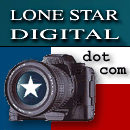
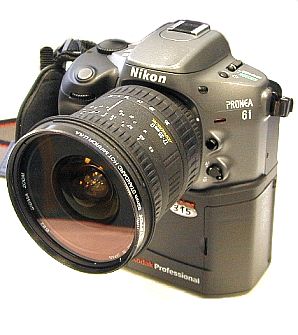
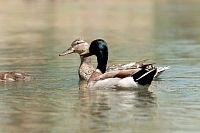



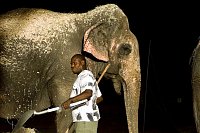
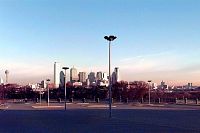
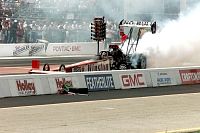
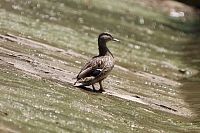
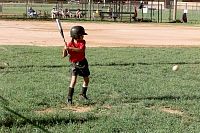
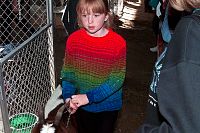
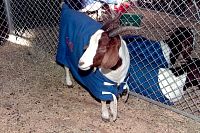
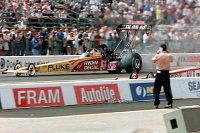

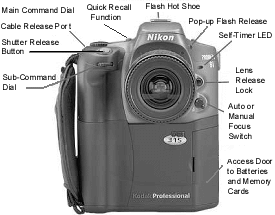
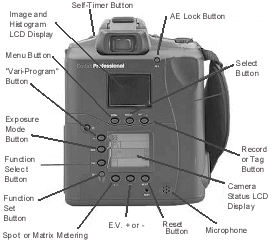
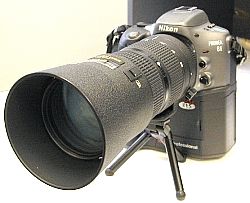
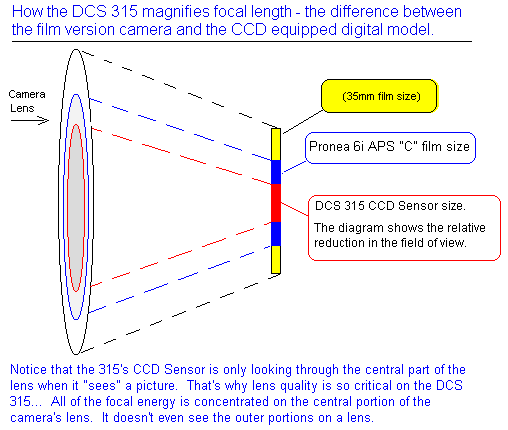
.jpg)
